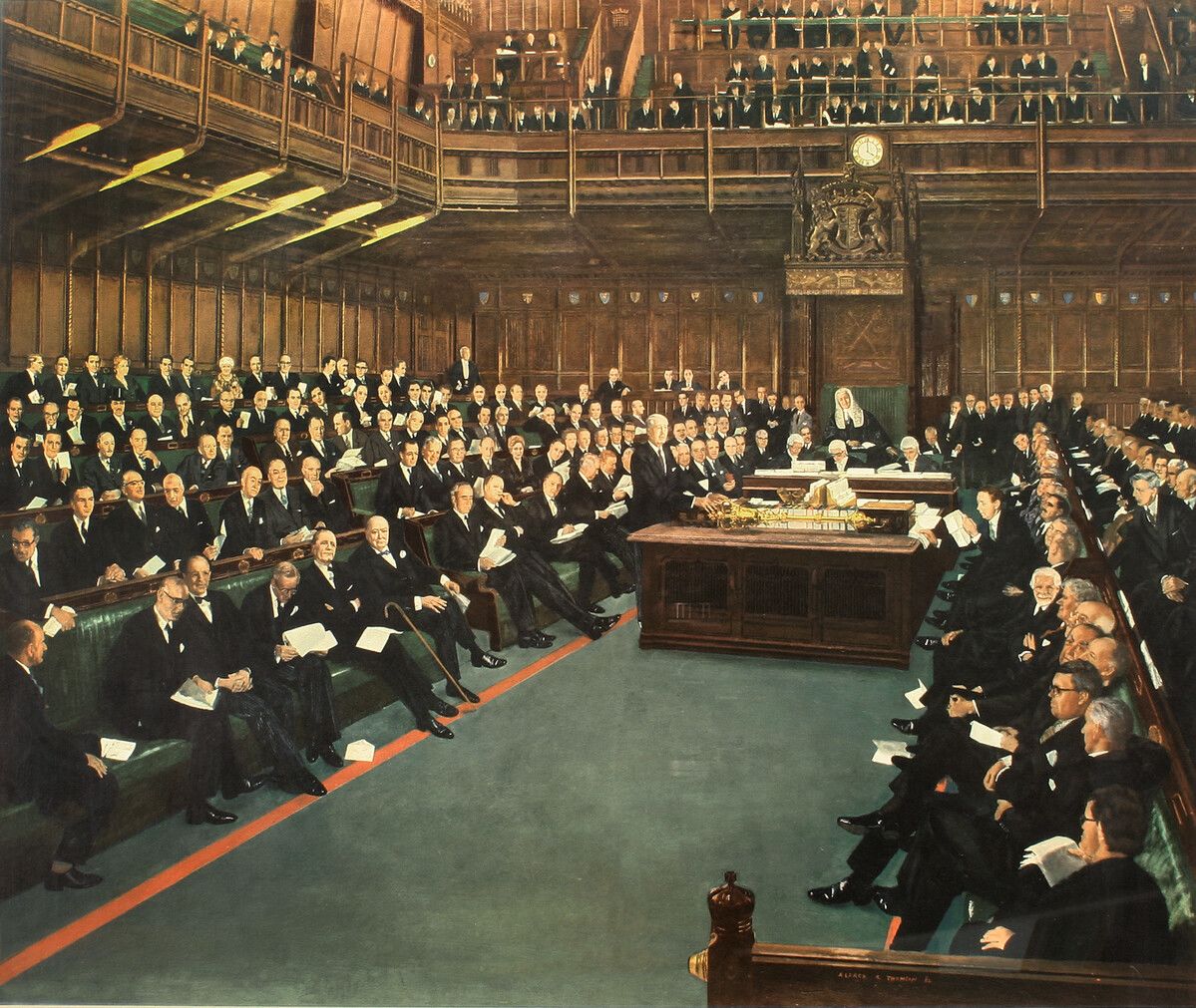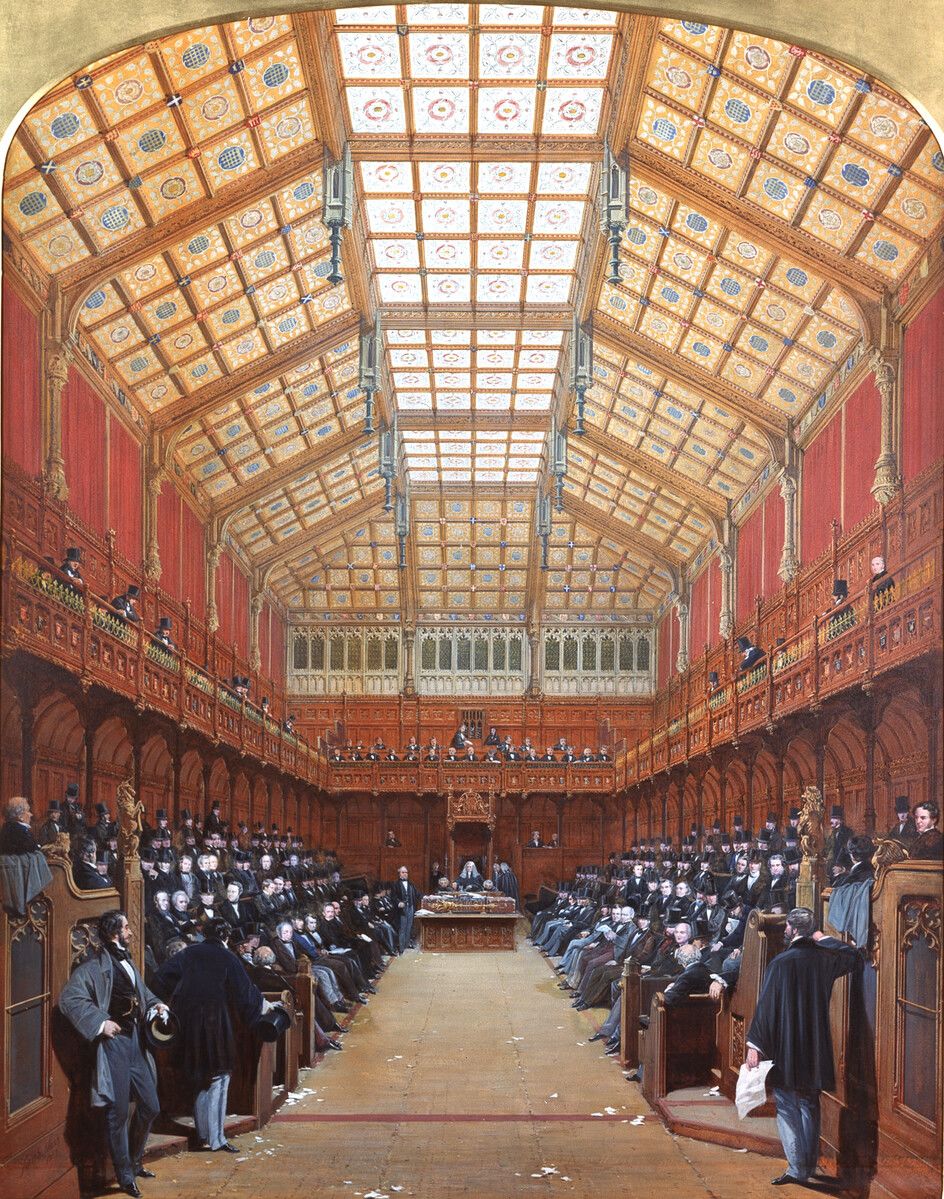80th anniversary of the bombing of the Houses of Parliament

On 10 May 1941, incendiary and high-explosive bombs were dropped on the Palace of Westminster, destroying the House of Commons Chamber and damaging the House of Lords Chamber, Westminster Hall and the Clock Tower. The air raid was part of the Luftwaffe’s (German Air Force) campaign of sustained aerial bombing attacks on Britain, known as the Blitz.

House of Commons 1986, Oil painting by June Mendoza, © June Mendoza. Photo Credit: Parliamentary Art Collection, WOA 3232.
House of Commons 1986, Oil painting by June Mendoza, © June Mendoza. Photo Credit: Parliamentary Art Collection, WOA 3232.
The fire spread from the Commons Chamber to Members’ Lobby, causing the ceiling to collapse. By the following morning, all that was left of the Victorian chamber was a smoking shell.
The destruction of the House of Commons chamber forced MPs to relocate to the larger space of the House of Lords.

The House of Commons, 1858, Colour bodycolour by Joseph Nash, © Parliamentary Art Collection, WOA 2934
The House of Commons, 1858, Colour bodycolour by Joseph Nash, © Parliamentary Art Collection, WOA 2934
In 1943, Prime Minister Sir Winston Churchill decreed that the Commons chamber must be ‘restored in all essentials to its old form, convenience and dignity’, insisting that the crowded intimacy of the old chamber must be replicated.
‘We shape our buildings and afterwards our buildings shape us,’ he said famously.
Sir Winston also believed that the lost chamber represented the essence of British Parliamentary democracy.
Its recreation would be an emblem for the future as symbolised by the incorporation of the surviving but burnt arch from the old chamber at its entrance.

Image of Churchill's arch in the House of Commons. Photo credit: UK Parliament/Jessica Taylor
Image of Churchill's arch in the House of Commons. Photo credit: UK Parliament/Jessica Taylor
Work on the new chamber began in May 1945. When the work was finished five years later it cost almost twice the original budget at £2m.
Architect Sir Giles Gilbert Scott was faced with the challenging task of fitting additional room for MPs and visitors above an already limited space of 21 x 14 metres at floor level.
He also had to hide the latest heating, ventilation, lighting and telephony equipment behind a gothic surface, which would blend with the rest of the Victorian Palace of Westminster.
King George VI presided over the opening of the new chamber on 26 October 1950, with a grand and high-profile ceremony in Westminster Hall, attended by hundreds of parliamentarians and overseas dignitaries.
Twenty-nine Commonwealth Speakers were in attendance in the Commons gallery, as MPs occupied their new green benches for the first time.

Dispatch box. UK Parliament/Jessica Taylor.
Dispatch box. UK Parliament/Jessica Taylor.
Some 56 gifts from Commonwealth countries – such as dispatch boxes from New Zealand and the inkstands from St Lucia – were and remain a strong and tangible symbol of their strong connections with the UK Parliament and the Westminster system of parliamentary democracy.
For Prime Minister Clement Attlee, the new Commons chamber stood as ‘the habitation, not merely of a number of individuals, but of the spirit of Parliamentary Government’.
Find out more about bomb damage to the Houses of Parliament here.
